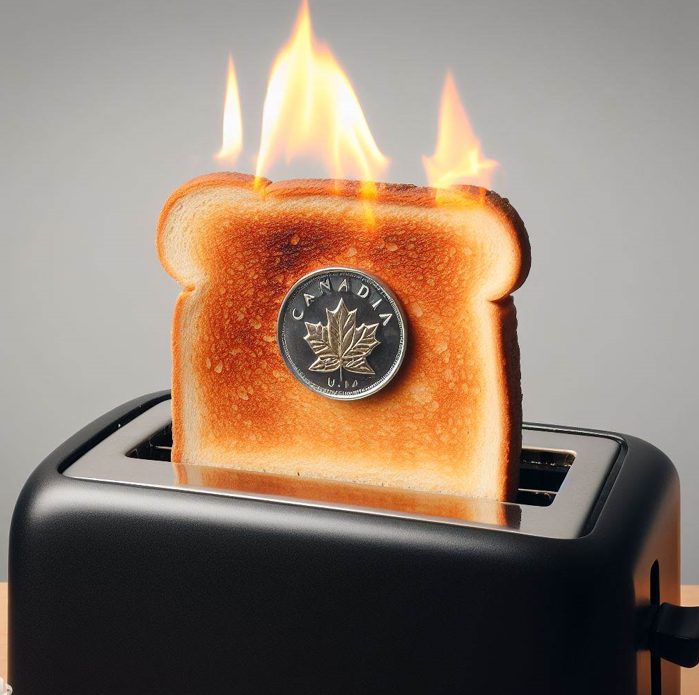
By Michael O’Neill
Borrowers are toasting the Bank of Canada, while FX traders are toasting the Loonie. USDCAD rallied from 1.3730 in Asia on October 24 to 1.3810 after the BoC surprised no one when it left interest rates unchanged at 5.0% on October 25.
Governor Tiff Macklem pumped his own tires when he said, “We held our policy rate steady today because monetary policy is working to cool the economy and relieve price pressures, and we want to give it time to do its job.”
He may have felt some pressure to act the way he did. Last month, prior to the September 6 meeting, the premiers of Ontario, Newfoundland and Labrador, and British Columbia complained to Mr. Macklem about the hardships his actions were creating for their constituents. Ontario Premier Doug Ford doubled down, and on October 22, he sent another letter to the Governor, expressing his opposition to any further rate increases quite bluntly. He said, “In a period of just 18 months, beginning last March, the Bank of Canada increased interest rates 10 times, a rate the bank itself acknowledges as the fastest in Canada’s history. The impact that these increases are having on hardworking individuals across Ontario is tangible, direct, and growing, particularly as thousands of people are forced to renegotiate their mortgages.”
Tiff had a tiff. He wrote to the complaining premiers saying, “While I am very pleased to get your perspectives on the impact of our policy decisions, instructions, or requests from elected officials about how we should set interest rates could create the impression that the Bank of Canada’s operational independence is at risk. I am sure you agree that this would be unfortunate.” That’s typical central banker double-speak, as I am pretty sure that he wasn’t pleased to get their perspectives at all.
The interest rate decision didn’t help the Canadian dollar, but it probably didn’t hurt it all that much. That’s because Uncle Sam is the lead in this FX rock band, and the Loonie is just a roadie.

Everything seems to be “peachy-keen for the US economy. Recent economic reports not only show its resilience but also a marked outperformance against its G-7 peers.
On November 1, the Federal Open Market Committee (FOMC) is widely expected to leave interest rates unchanged at 5.50%. Fed Chair Jerome Powell seems to agree, or at least he did on October 19. Mr. Powell suggested that the rise in long-term Treasury yields may give the Fed some breathing room on interest rates, saying, “We have to let this play out and watch it, but for now, it is clearly a tightening in financial conditions.”
The dot plot forecast from September suggested at least one more hike in 2023, and the odds of such a move are 30% for December, with rates remaining at elevated levels for most of 2024. Bond traders agree. The 10-year Treasury yield rose to 4.96% after US housing starts surged, which reinforced the argument for rates to remain high for a prolonged period.
Meanwhile, the Bank of England (BoE), European Central Bank (ECB), and BoC appear to have reached the end of their rate hike cycles. The ECB will justify an unchanged policy rate on October 26 because inflation slowed more than expected in September, while higher bond yields are helping to tighten monetary policy. The BoE is also planning to leave rates unchanged at its November 2 meeting according to 61 of 73 economists surveyed by Reuters. They will justify that inaction by claiming the effects of previous hikes are still coming through.
That gives the US dollar a massive yield advantage over Japan, Switzerland, and Germany, while enjoying smaller spreads against Canada and the UK. That is bullish for USDCAD.
The US economy is expected to have grown 4.2% y/y in Q3, doubling its growth in Q2, which is in sharp contrast with the Canadian experience. The BoC expects GDP growth to be below 1.0% for the “next several quarters,” which adds another layer of support for USDCAD.
Oil price gains are not hampering USDCAD gains like they used to. A key reason is that the Federal government does not want any new investment in fossil fuels. Another reason is that export pipelines are at or near capacity, which is one of the reasons Canada’s Western Canada Select is trading at a $27.00 US dollar discount to WTI.
The USDCAD technical picture is bullish, and it suggests that a confirmed break above the 1.3860-80 area will lead to 1.4190.
There was a lot of toasting going on at the end of the BoC monetary policy meeting, but it was the Canadian dollar that got charred.





